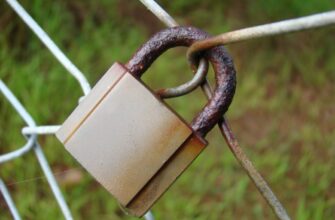🚀 USDT Mixer — Ultimate Privacy, Zero Hassle
Take full control of your USDT TRC20 transfers with our secure mixing service. 🧠
No registration. No personal data. Just clean, private transactions 24/7. 🌐
Transparent fees starting from only 0.5%.
If you’re new to Ethereum development or testing decentralized applications (dApps), you’ve likely encountered the term “testnet faucet.” This essential tool provides free test Ether (ETH) for experimenting on Ethereum’s practice networks without risking real funds. In this beginner’s guide, you’ll learn how testnet faucets work, why they’re crucial for developers, and how to use them safely and efficiently.
- What is an Ethereum Testnet?
- Why Testnet ETH Faucets Are Essential for Beginners
- How to Get Testnet ETH: A 5-Step Beginner’s Process
- Top 5 Ethereum Testnet Faucets for 2024
- Troubleshooting Common Faucet Issues
- Testnet Faucet Security Best Practices
- Frequently Asked Questions (FAQ)
- Can I convert testnet ETH to real ETH?
- How often can I use Ethereum faucets?
- Why do some faucets require social media logins?
- What happens when testnets get deprecated?
- Can I mine testnet ETH?
What is an Ethereum Testnet?
Ethereum testnets are replica networks mimicking the main Ethereum blockchain (Mainnet) but using valueless cryptocurrency. They allow developers to:
- Test smart contracts and dApps in a risk-free environment
- Simulate transactions and interactions
- Identify bugs before deploying to Mainnet
- Learn blockchain mechanics without financial stakes
Popular testnets include Goerli (currently the most stable), Sepolia (lightweight), and Holešky (newest for staking tests). Each requires specific test ETH only obtainable through faucets.
Why Testnet ETH Faucets Are Essential for Beginners
Testnet faucets solve a critical problem: You need ETH to interact with Ethereum networks, even test versions. Since test ETH has no real value, faucets distribute it freely. Key benefits include:
- Zero-cost learning: Practice transactions, deployments, and wallet setups without spending money
- Development safety: Catch smart contract errors before launching on Mainnet
- Network health: Prevents testnet spam by limiting faucet distributions
- Accessibility: Lowers entry barriers for new developers and users
How to Get Testnet ETH: A 5-Step Beginner’s Process
- Choose a testnet: Select Goerli for general development or Sepolia for faster testing
- Set up a wallet: Install MetaMask and create a new account (never use your Mainnet wallet)
- Switch networks: In MetaMask, add the testnet network via Chainlist.org or manual RPC settings
- Find a faucet: Visit reputable faucets like Alchemy’s Super Faucet, QuickNode, or official Ethereum Foundation options
- Request test ETH: Paste your wallet address, complete any verification (e.g., CAPTCHA), and wait 1-60 minutes for funds
Always verify faucet URLs to avoid phishing scams – legitimate faucets never ask for private keys.
Top 5 Ethereum Testnet Faucets for 2024
- Alchemy Super Faucet: Best for Goerli/Sepolia – provides 0.5 ETH per request with social verification
- QuickNode Multi-Chain Faucet: Supports 8+ testnets with generous limits after free account creation
- PoW Faucet: Decentralized Goerli option requiring light mining to prevent abuse
- Ethereum Foundation Faucet: Official Sepolia faucet with GitHub authentication for developers
- Chainlink Faucet: Ideal for testing oracle integrations with 10-second processing
Troubleshooting Common Faucet Issues
Encountering problems? Try these solutions:
- “Transaction pending” delays: Testnets often have slower block times – wait 15+ minutes
- Faucet rate limits: Most restrict requests per day/IP address – switch networks or use alternatives
- Wrong network errors: Double-check MetaMask is connected to the correct testnet
- Empty faucets: Some community faucets run dry – use institutional options like Alchemy
- Verification failures: Complete CAPTCHAs carefully or try social authentication
Testnet Faucet Security Best Practices
Protect yourself while testing:
- Never connect Mainnet wallets to faucets
- Use burner wallets exclusively for testing
- Bookmark official faucet URLs to avoid phishing sites
- Verify contract addresses when interacting with test dApps
- Reset MetaMask test accounts after experiments
Frequently Asked Questions (FAQ)
Can I convert testnet ETH to real ETH?
No. Testnet ETH has no monetary value and cannot be converted, traded, or bridged to Mainnet. It exists solely for development purposes.
How often can I use Ethereum faucets?
Most faucets allow 1-5 requests per 24 hours per IP address or account. High-volume testing requires multiple faucets or developer platforms like Infura.
Why do some faucets require social media logins?
Authentication prevents bots from draining resources. Reputable faucets use OAuth (e.g., GitHub, Twitter) without accessing private data.
What happens when testnets get deprecated?
Old testnets like Ropsten are phased out. Always use current networks (Goerli/Sepolia), and migrate projects before deprecation deadlines.
Can I mine testnet ETH?
Yes, but it’s impractical for beginners. PoW testnets like Goerli allow mining, but faucets remain the simplest solution for small amounts.
Testnet faucets are indispensable tools in your Web3 journey. By mastering them, you unlock safe experimentation with smart contracts, DeFi protocols, and NFTs – building skills that translate directly to real Ethereum applications. Start with small faucet requests today to fuel your blockchain education!
🚀 USDT Mixer — Ultimate Privacy, Zero Hassle
Take full control of your USDT TRC20 transfers with our secure mixing service. 🧠
No registration. No personal data. Just clean, private transactions 24/7. 🌐
Transparent fees starting from only 0.5%.








